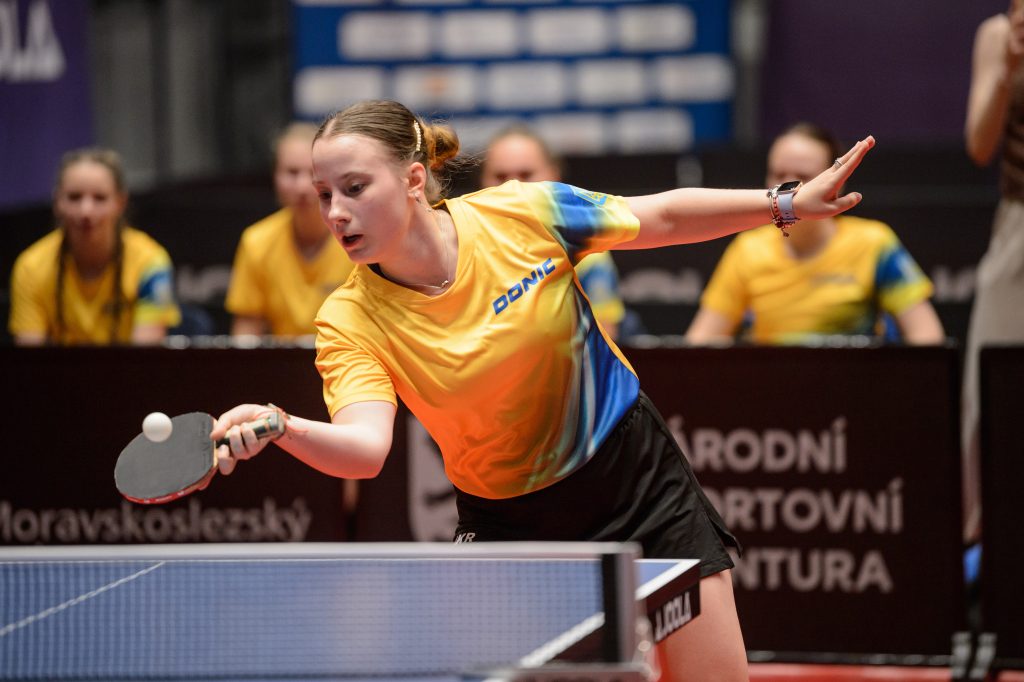Winner of the Women’s World Cup in Singapore in 2011 China’s DING Ning repeated the feat in the Austrian city of Linz. In Singapore at the final hurdle she had beaten colleague LI Xiaoxia in the final in five games (11-9 11-5 7-11 14-12 11-9); in
Winner of the Women’s World Cup in Singapore in 2011 China’s DING Ning repeated the feat in the Austrian city of Linz. In Singapore at the final hurdle she had beaten colleague LI Xiaoxia in the final in five games (11-9 11-5 7-11 14-12 11-9); in Linz she prevailed in four straight game(11-7 11-9 13-11 11-5).
Third place went to Japan’s Kasumi ISHIKAWA; she overcame Hungary’s Georgina POTA in a contest that went the full seven match distance (11-9 8-11 6-11 11-3 7-11 11-9 11-4) to secure her best ever finish in a Women’s World Cup one her third appearance.She made her debut in Singapore in 2011 but did not advance beyond the group stage; one year ago in Kobe she was beaten in the quarter-finals by Singapore’s FENG Tianwei.
A fine effort by Kasumi ISHIKAWA but the day belonged to DING Ning in the final she was the quicker to attack she was the more incisive; the forehand top spin stroke in fluent motion; the backhand block as safe as the Great Wall of China.
“I’m delighted to be here in Linz in Upper Austria” said DING Ning who has very happy memories of the region; it was in Linz but in a different venue that she was crowned World Junior champion in 2005.“It’s been a really good experience once again in this city. I hope I can play in more tournaments here!”
It was the second time that Kasumi ISHIKAWA and Georgina POTA had met in a World ranking event; on the one previous occasion success had gone the way of Hungarian but that was over three years ago in March 2011.
On the ITTF World Tour at the Polish Open Georgina POTA had prevailed in six games in their second round Women’s Singles encounter.
Crowd support was very much on the side of Georgina POTA the Hungarian capital city of Budapest being only some four hours by car from Linz.
Throughout the tournament the backhand counter topspin play of Georgina POTA had proved potent; it was that talent in particular which had guided the Hungarian to the concluding day of action. Conversely for Kasumi ISHIKAWA a fast forehand top spin to follow the service or heavy top spin on the first attack was very much her formula for success; most certainly imparting heavy rotation on the ball early in the rally was vital if Kasumi Ishikawa was to succeed.
The contest went the full seven games at the change of ends Kasumi ISHIKAWA led 5-2; it was a telling lead. Kasumi ISHIKAWA never relaxed the grip. “Georgina made few unforced errors; playing against her you must force the errors” said Kasumi ISHIKAWA. “Her backhand is special very strong; also her serves are difficult to read.”
It was important to seize the initiative. “I had to be aggressive and play point by point” added Kasumi ISHIKAWA. “Overall I have to be pleased; next year to reach the final!”





































